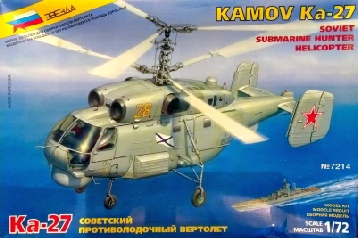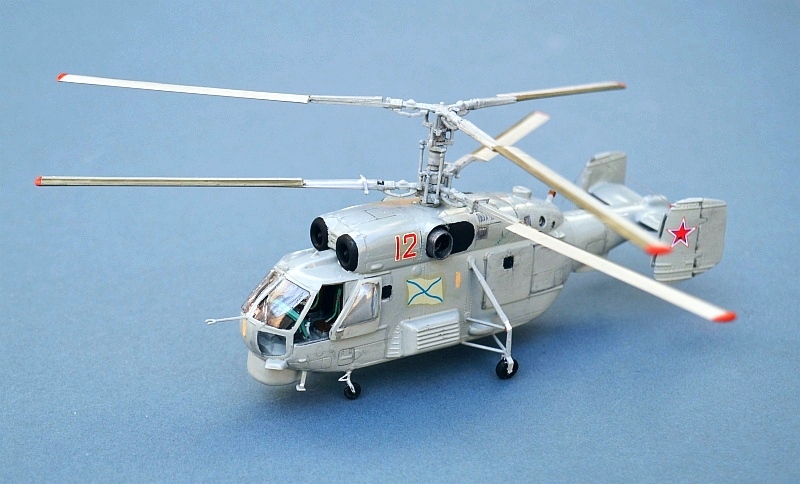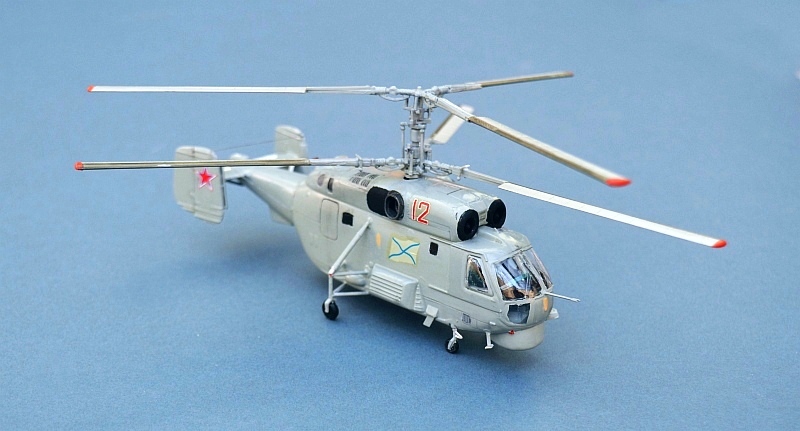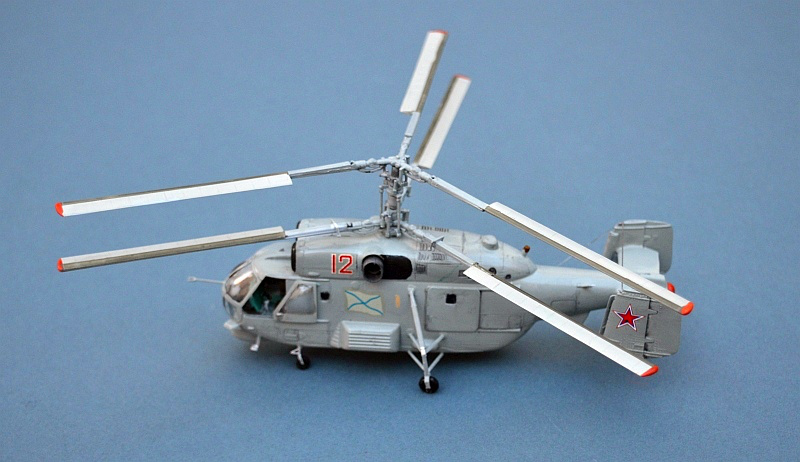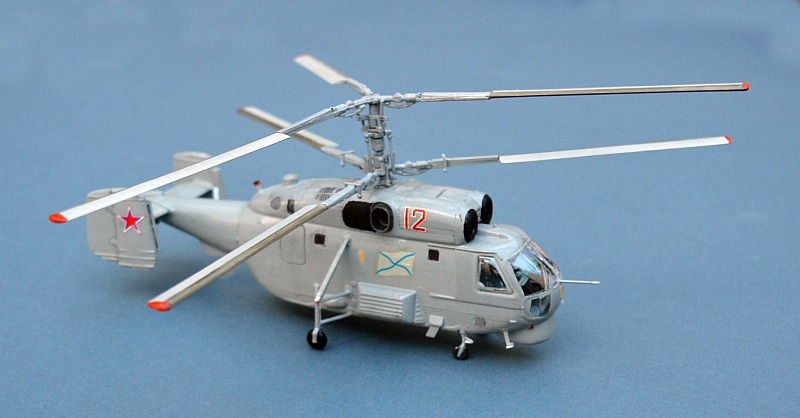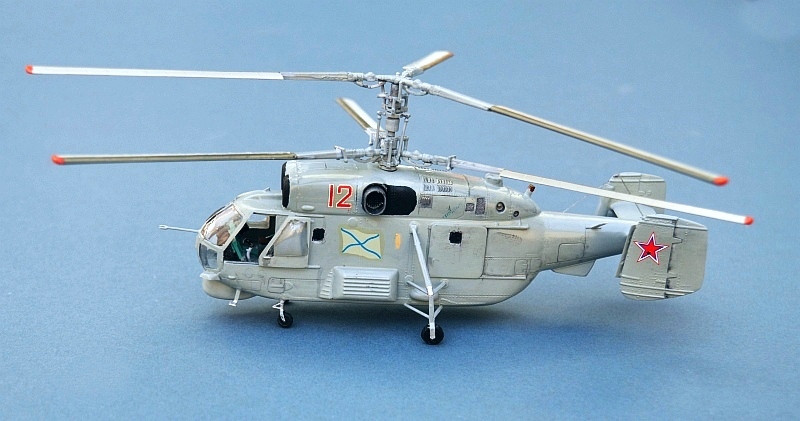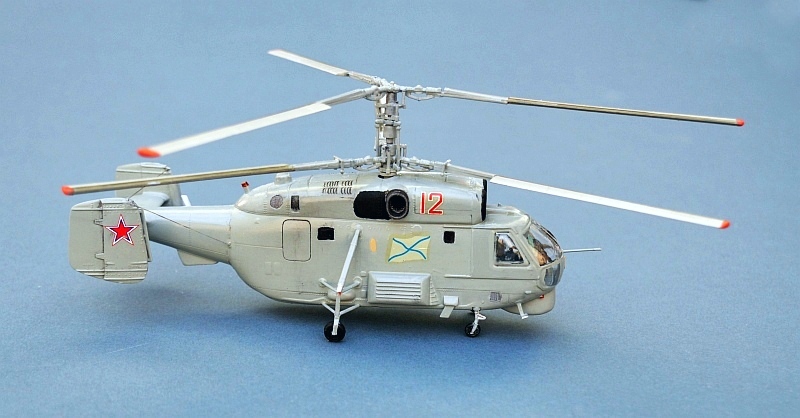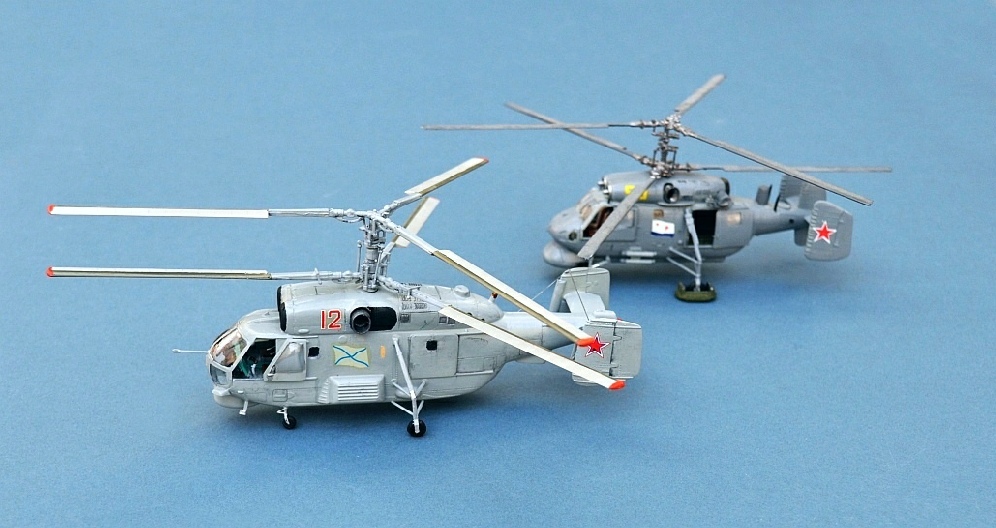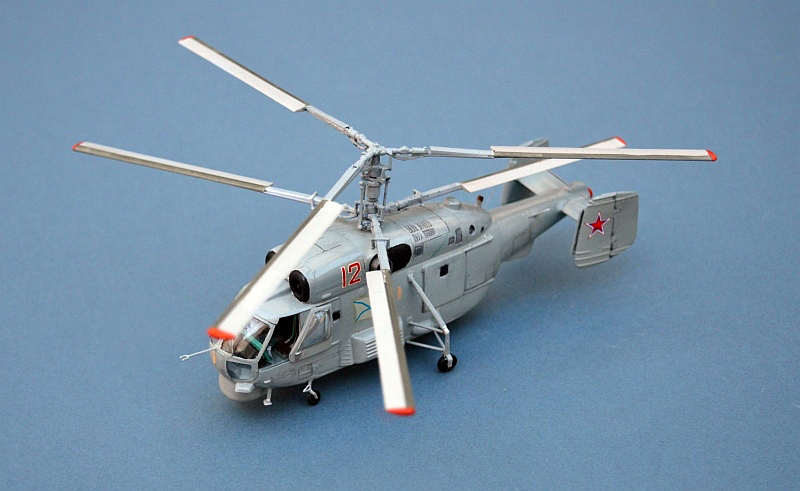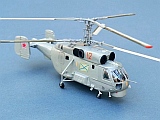February 2020
Kamov Ka-
Kamov Ka-
Russian Federation Naval Aviation, Northern Fleet, 2018.
Zvezda 1/72 with various markings from spares box
© www.gengriz.co.uk
Have a look at many more of my Russian & Soviet models on my Other Side pages
The Ka-
Widely deployed on Russian frigates, cruisers and carriers as well as operating from
ashore in ASW and SAR roles, the Helix has seen considerable export success, in both
military and civil environments. Upgraded versions entered service with the Russian
Federation Navy as recently as 2016 and a modified Ka-
Building the Zvezda Kit:
As with my previous Zvezda kit build (a Su-
Nevertheless, it assembles easily with the sole exception of the very complex rotor head assembly (mine still turns, but not very smoothly!). I reduced the size of the rivets on the tail assembly (my reference pictures don’t show them as particularly prominent) and added detail to the instrument panel and seats.
When completed, the main rotor head sits very high, making storage of the kit difficult and leaving it vulnerable to damage, so I left mine removable. Unfortunately, the assembly does not sit particularly securely well in its mounting, tending to angle back at the least provocation. As a result I added a plastic card base to try and secure it more effectively.
Decals are very generic, for “yellow 22” of an undefined Russian Navy unit and with no additional information forthcoming from Zvezda. The decal paper is of the disappointing “blotting paper” variety and the decals look to be over scale and crudely printed with no stencils or other detail. Furthermore, the white naval ensign is not very white, exacerbated by its transparency.
In the end this was the only decal I used It worked well), substituting some smaller spare numbers and some more modern Russian stars (with the blue borders). In sum, this is a reasonable, if simplified kit, of slightly questionable accuracy, but an enjoyable build nevertheless.
